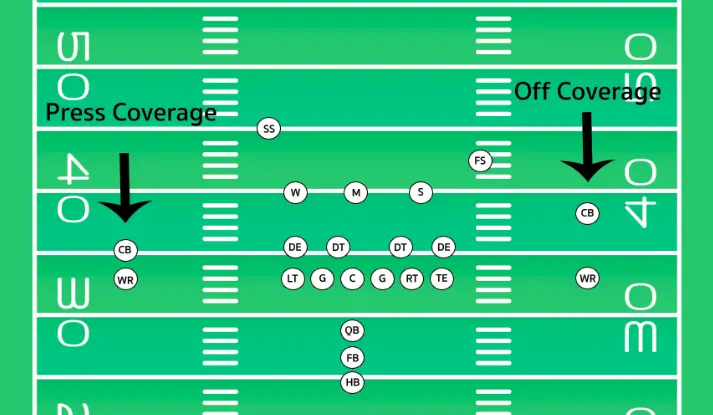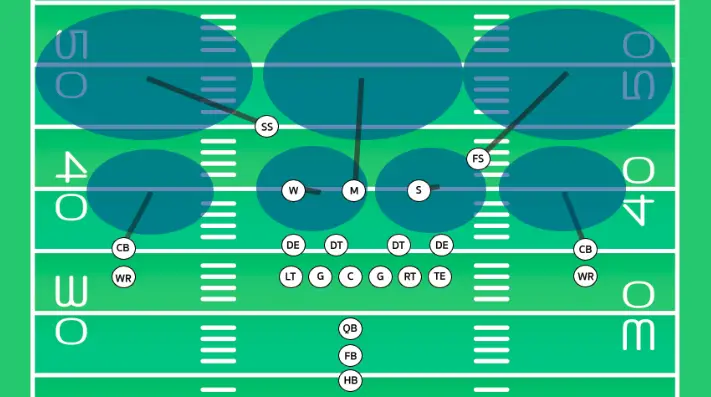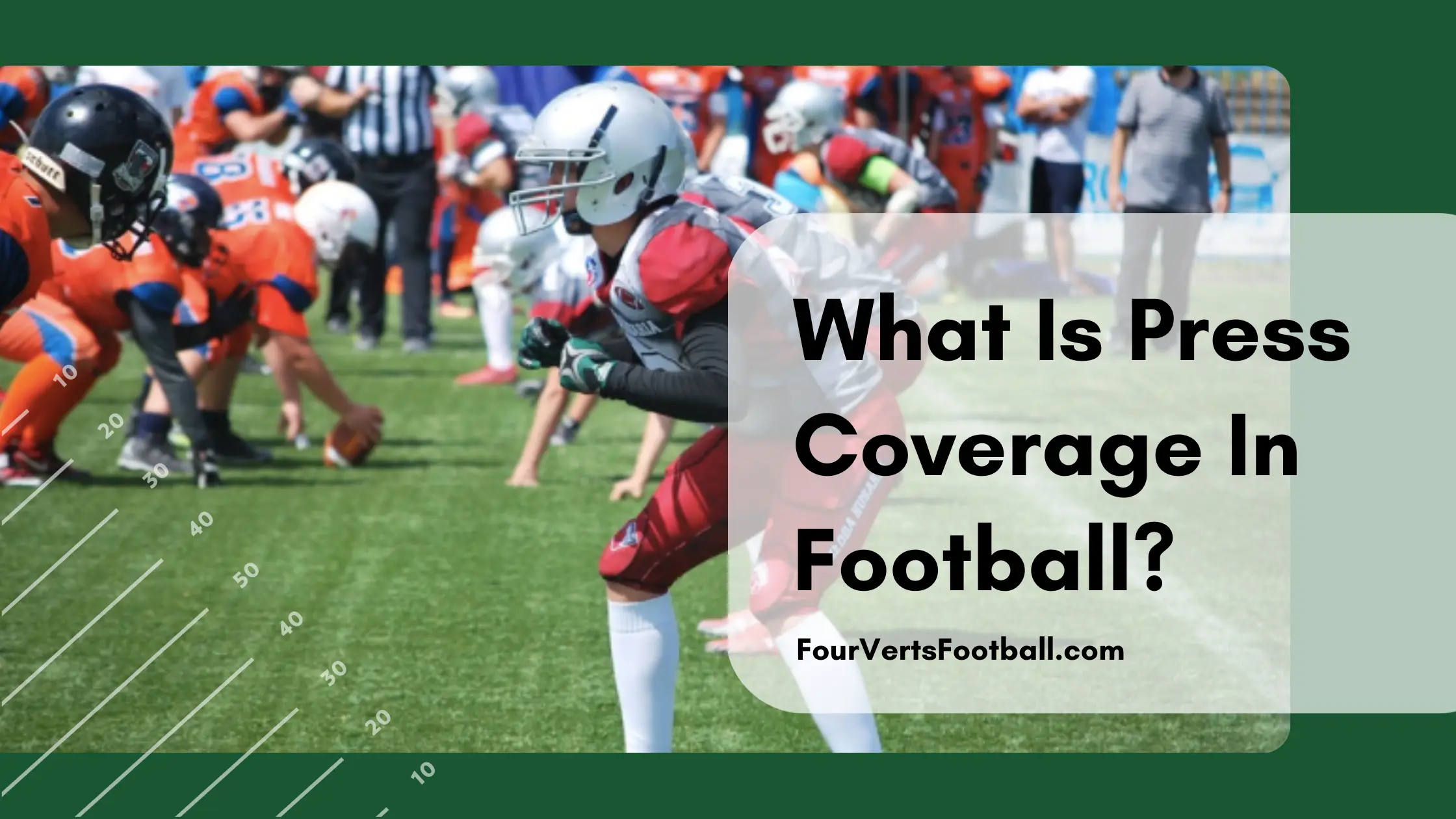There are tons of different styles of pass coverage in the game of football. One technique often used by physical defensive backs is press coverage.
Press coverage is a style of defensive pass coverage that involves starting the play lined up on the line of scrimmage. This coverage gives the opposing wide receiver no cushion and allows you to initiate physical contact with them as he takes his first step.
This article is going to cover how to beat press coverage, why this coverage works, and what positions play this coverage.
How to beat press coverage

One issue with press coverage is that it requires cornerbacks to play quite aggressively.
With no space between the cornerback and wide receiver, the defensive back is going to have no cushion to rely on. A cushion in football refers to the space between the cornerback and the receiver to start the play.
With no cushion a receiver that is faster than the cornerback you can beat them downfield. The key to taking advantage of the close proximity of the cornerback is a good release.
A release in football refers to the first few steps a wide receiver will take when starting their route.
If a cornerback is playing press coverage yet not being very physical you are going to want to use a speed release.
This consists of choosing the inside or outside shoulder of the cornerback and attacking that side. The receiver should dip their inside shoulder and use their arm to bat away any contact from the defensive back.
Once the receiver is past the cornerback he should be able to get open downfield. This is because the cornerback will start the play running backwards while the receiver will be running forwards.
The other technique that can be used to beat press coverage is the triple move.
Cornerbacks in press coverage will often allow one fake by the receiver and then begin to follow their movements. If a receiver can pull off a triple move such as outside-inside-outside they will have a shot at fooling the defender.
If the receiver gets the defender in press coverage to buy the fake they will have no trouble getting open.
Why Press Coverage Works

One of the main reasons press coverage is so effective is because defenders can stop speedsters and deep-threat wide receivers.
Often times these players rely on the cushion to get to their top speed. By that point, they meet the cornerback they are already gone.
With press coverage, defenders can get physical with these speedy receivers who are often of small stature.
This slows the playdown and makes it more difficult to gain speed.
Defenders can use this coverage can throw off the timing of the play.
Many times wide receivers’ routes are down to the step. Meaning something like “take five steps downfield then hook”.
The five steps are used as a timing mechanism for the quarterback and receiver to be on the same page. If the defenders are able to jam your receiver effectively those five steps are going to a lot slower than five steps with a cushion.
This throws off the timing of the playmaking it much more difficult for the offense to execute.
Can A Player Press In Zone Coverage?

Defensive players are able to play press coverage when in a zone defense. Press coverage is most often used in man coverage but can be played in a man or zone defense.
Press coverage can be especially effective when covering a short zone. When pressing in football one of the biggest risks is getting beat deep downfield.
If a defender is playing a short zone they do not have to worry about covering deep down the field.
This means they can sell out on their press coverage in order to slow down the route of the player they are covering.
Players in an intermediate or deep zone may also play press coverage but this is less common. Getting physical with a receiver at the line of scrimmage may make it difficult for a defensive player to cover their zone if it is deeper down the field.
Which Positions Use This Style of Coverage
Press coverage is played almost exclusively by defensive backs. Cornerbacks are the position most likely to play press coverage while safeties also use it as well.
There are some instances in which linebackers play press on tight ends or slot receivers but this is much less common.
That’s all on press coverage in football now you may be wondering about other pass coverage techniques such as bump and run or banjo coverage.

